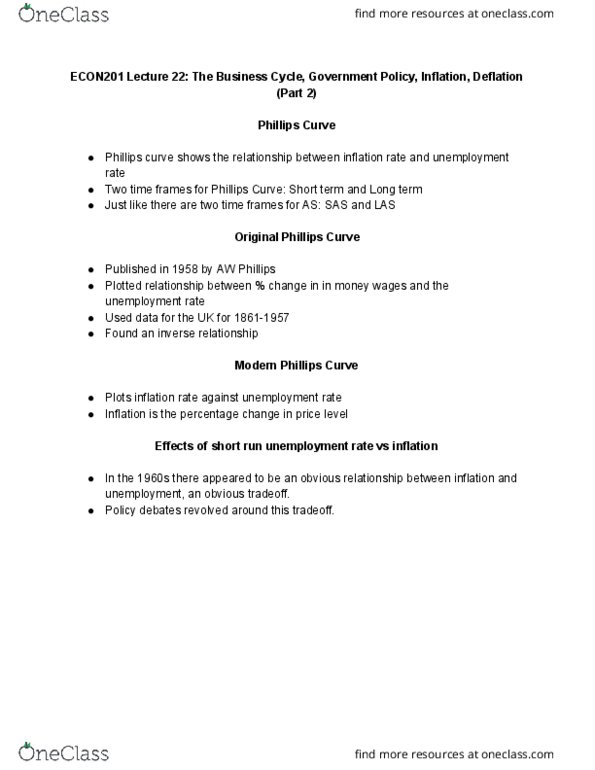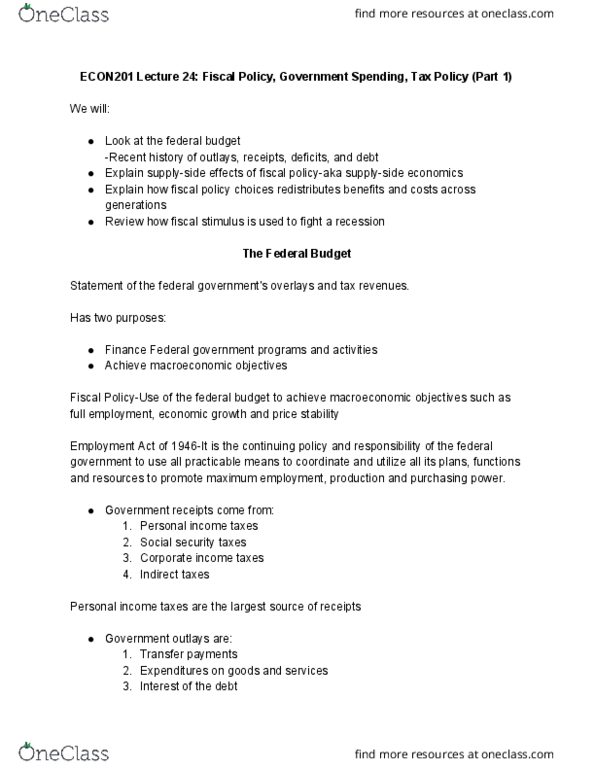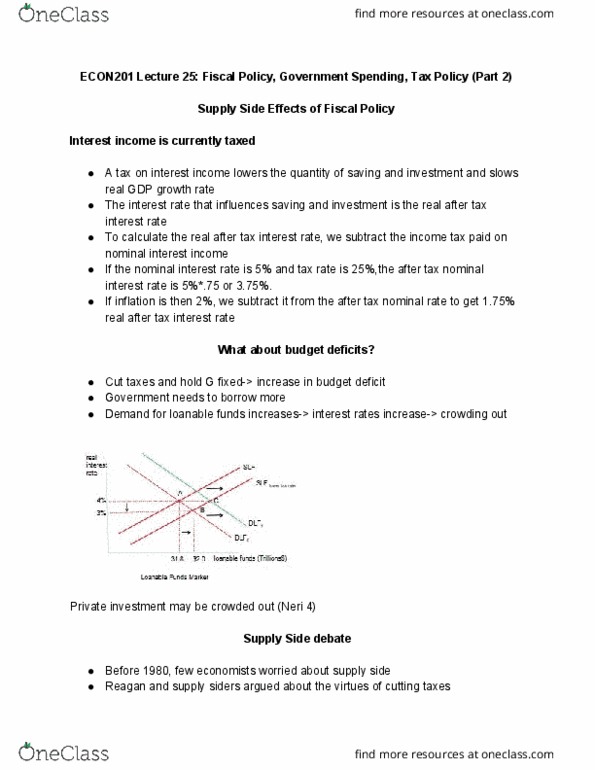1. The primary tool used by supply-side economists to eliminate macroeconomic problems is
A. the discount rate.
B. corporate tax rates.
C. government spending.
D. open market operations.
E. the reserve requirement.
2. When the Federal Reserve System buys government securities on the open market,
A. the money supply will decrease.
B. excess reserves at commercial banks will decrease.
C. excess reserves at commercial banks will increase.
D. interest rates will increase
3. One of the advantages of automatic stabilizers over discretionary fiscal policy is that automatic stabilizers
A. has a greater multiplier effect than discretionary policy.
B. is not subject to the time lag problems of discretionary policy.
C. does not produce a deficit during recessions as a discretionary policy does.
D. makes the actual budget a better reflection of the condition of the economy than the full-employment budget.
4. "I have promised to do everything in my power to reduce the federal deficit. That means reducing federal expenditures and, if necessary, increasing taxes. Under present conditions of full employment and steady prices, we can afford to bear the burden of this debt (i.e., pay off the debt) now instead of passing it on to our children and grandchildren."
If the policies of the Senator quoted above were adopted, what effects would be expected while these policies were being implemented?
A. higher inflation
B. increases imports
C. higher rates of economic growth
D. increased unemployment and idle capacity
5. An inflationary gap can be reduced or completely closed by
A. decreasing taxes while leaving government spending on goods and services unchanged.
B. decreasing government spending on goods and services while leaving taxes unchanged.
C. increasing government spending on goods and services while leaving taxes unchanged.
D. increasing both government spending on goods and services and taxes by the same amount.
6. Compared to fiscal policy, an advantage of monetary policy is its
A. greater flexibility.
B. highly selective impact on segments of the economy.
C. ability to eliminate cost-push inflation.
D. need for approval by Congress.
E. need for approval by the President.
7. An increase in government spending on goods and services which causes a budget deficit to exist
A. is always inflationary.
B. is more inflationary than equal increases in private spending.
C. is usually not inflationary when the economy is operating at its full-employment level of output.
D. will not necessarily cause serious inflation as long as there are unemployed resources in the economy.
8. Some analysts believe the tax cuts enacted during the President H.W. Bush administration represented a supply-side economic policy rather than a Keynesian fiscal policy because
A. the tax cuts were accompanied by decreases in interest rates.
B. the tax cuts were accompanied by increases in government spending.
C. the tax cuts were primarily aimed at upper-income groups and businesses.
D. the tax cuts were primarily aimed at middle income and lower-income groups.
9. When the federal government is stabilizing the economy by increasing taxes, monetary authorities should
A. take actions to decrease interest rates.
B. increase the supply of money.
C. buy government securities in the open market.
D. follow an expansionary money policy.
E. follow a contractionary money policy.
10. Suppose a commercial bank has demand deposits (checking accounts) of $400,000, actual reserves of $170,000, and a reserve requirement of 20%. This single commercial bank can lend a maximum of ______ and the banking system can increase loans by a maximum of ______
A. $90,000 and $450,000.
B. $90,000 and $360,000.
C. $90,000 and $170,000.
D. $170,000 and $450,000.
E. both can lend an unlimited amount.
11. Which of the following would most likely result if the federal government increased its spending without changing tax revenues during a period of full employment?
A. inflation
B. a recession
C. lower interest rates
D. a larger net exports deficit
12. Fiscal policy that emphasizes cutting taxes as a means of improving incentives to work, and invest would be characterized in aggregate demand - aggregate supply framework primarily a shift
A. left in the aggregate demand curve.
B. left in the aggregate supply curve.
C. right in the aggregate supply curve.
D. no shift in either the aggregate demand curve or the aggregate supply curve.
13. Which of the following will result in the greatest increase in aggregate expenditures/demand?
A. A $100 decrease in personal income taxes
B. A $100 increase in personal income taxes
C. A $100 increase in government expenditures
D. A $100 increase in government expenditures which is accompanied by a $100 increase in personal income taxes
E. Both A and C will have the same effect on aggregate expenditures
14. You are given the following information about aggregate demand for an economy: (1)consumption = $600 billion; (2) investment = $50 billion; (3) government purchases = $100 billion; and (4) net export = $20 billion. If the full-employment level of GDP for this economy is $720 billion, then what combination of actions would be most consistent to achieve full employment and stable prices?
A. an increase in government spending and taxes
B. decrease government spending and taxes
C. decrease government spending and increase taxes
D. increase government spending and decrease taxes
15. Advocates of fiscal policy agree that discretionary fiscal policy will stabilize the business cycle most when the federal government
A. continuously incurs budget deficits.
B. continuously runs budget surpluses.
C. balances its budget every year.
D. incurs budget deficits during recessions and budget surpluses during demand-pull inflations.
E. incurs budget surpluses during recessions and budget deficits during demand-pull inflations.
16. Discretionary fiscal policy that increases the government budget deficit has the same effect on equilibrium as
A. an increase in personal saving.
B. an increase in business investment.
C. a decrease in government spending.
D. a decrease in personal consumption expenditures






